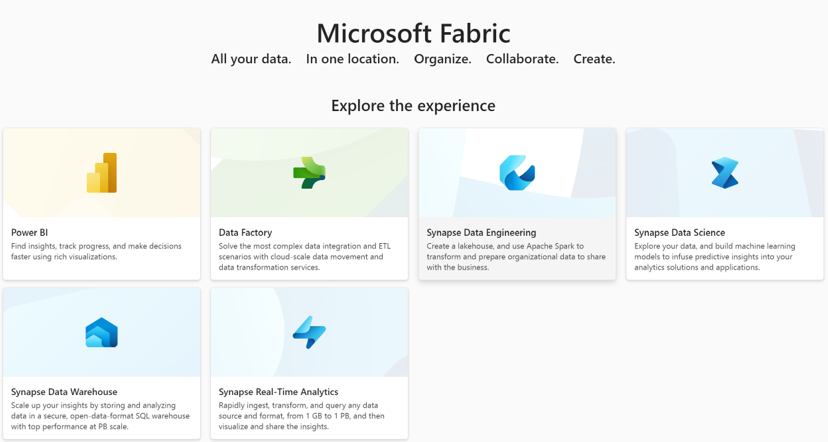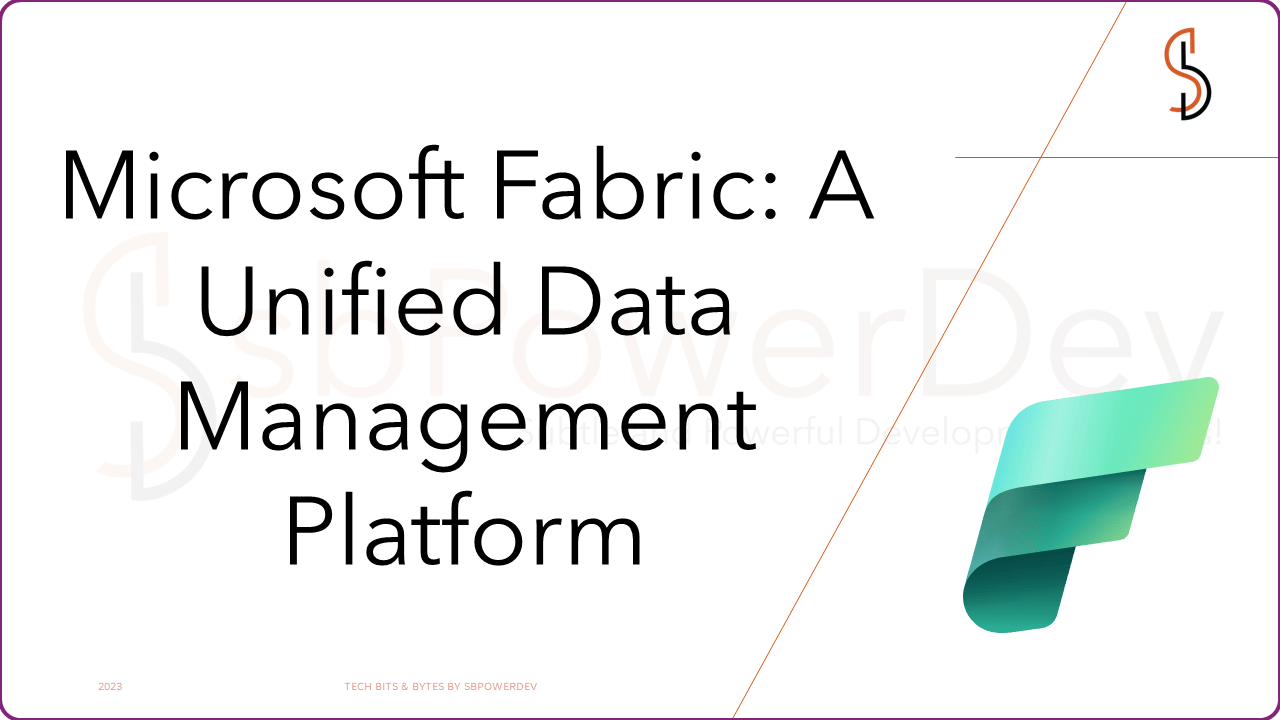What is Microsoft Fabric?
Microsoft Fabric is a unified data management platform that helps businesses simplify and automate their data management processes. It is a collection of integrated services providing a single data view across an organization. Microsoft Fabric allows the integration of different services like- data lake, data integration, and data engineering.
SaaS (Software as a Service) is the foundation for Microsoft Fabric. It can integrate Power BI, Azure Synapse, and Azure Data Factory into one.

This integration brings data fragments like Data Science, Data Factory, Data warehouse, Data Engineering, Power BI, and Real-Time Analysis into one. It allows the user to give the best output without worrying about integration, infrastructure, etc.
What are the benefits of using Microsoft Fabric?
We read about what Microsoft Fabric is now let’s see the benefits of the same.
- Simplified data management: Microsoft Fabric provides a single view of data across an organization, which can help businesses simplify their data management processes. This is because businesses no longer need to manage data in multiple silos, which can be difficult and time-consuming.
- Scalability: Microsoft Fabric is a scalable platform that can grow with the needs of an organization. This means that businesses can easily add more data or users without having to worry about the platform becoming overloaded.
- Security: Microsoft Fabric provides a secure platform for storing and managing data. This is because the platform is built on Microsoft Azure, which is one of the most secure cloud platforms available.
- Analysis: Microsoft Fabric provides a variety of data analysis tools that can help businesses make better decisions. These tools can be used to analyze data from a variety of sources, and they can help businesses identify trends and patterns that can be used to improve their business.
- User-friendly: Microsoft Fabric has a user-friendly interface that makes it easy to use. This means that businesses can get started with Microsoft Fabric quickly and easily, even if they do not have a lot of experience with data management.
- Cost-effectiveness: Microsoft Fabric is a cost-effective platform for businesses of all sizes. The pricing plans are based on the number of users, the amount of data stored, and the features used.
- Compliance: Microsoft Fabric is compliant with a variety of industry regulations, including HIPAA, SOX, and GDPR. This means that businesses can use Microsoft Fabric to store and manage sensitive data without having to worry about compliance issues.
- Support: Microsoft offers a variety of support options for Microsoft Fabric, including 24/7 support, online documentation, and training courses. This means that businesses can get help when they need it, so they can continue to use Microsoft Fabric to manage their data.
And many more. So as we can make out it is a powerful and versatile platform that benefits all sizes of business. Microsoft Fabric is a good option for automation and integration for data management.
What are the components of Microsoft Fabric?

The components of Microsoft Fabric are as follow-
Data Engineering:
Data engineering in Microsoft Fabric is a discipline that uses data to create and maintain infrastructures and systems that enable organizations to collect, store, process, and analyze large volumes of data. Data engineers use a variety of tools and techniques to design, build, and maintain these systems. In Microsoft Fabric, data engineering empowers users to create, construct, and manage the infrastructures and systems necessary for organizations to effectively gather, store, handle, and analyze extensive amounts of data. We have 3 options here-Lakehouse, Notebook, Spark Job Definition.

Data Factory:
Data Factory is a service provided by Microsoft that operates in the cloud and aids businesses in consolidating data from diverse sources. Its primary functions include establishing data pipelines, automating data transformation processes, and loading data into various types of data stores.

Data Science:
Data science in Microsoft Fabric is a discipline that uses data to solve business problems. Data scientists use a variety of tools and techniques to analyze data, identify patterns, and make predictions.
Within the Microsoft Fabric experience, the Data Science capability empowers users to effortlessly construct, deploy, and operationalize machine learning models. It seamlessly integrates with Azure Machine Learning, offering convenient features such as built-in experiment tracking and model registry. Data scientists are enabled to enhance organizational data with predictive insights, enabling business analysts to seamlessly incorporate those predictions into their business intelligence reports.

Data Warehouse:
In Microsoft Fabric, a data warehouse refers to a powerful data analytics engine that is fully SQL-enabled and operates within the OneLake storage system. It serves as a scalable and secure platform designed for storing and analyzing vast quantities of data.
Data warehouses primarily serve the purpose of storing historical data, which can subsequently be leveraged for in-depth analysis. By utilizing this data, businesses can gain valuable insights into trends, detect patterns, and even make predictions.
The data warehouses within Microsoft Fabric are constructed upon the Azure Synapse Analytics platform, ensuring a robust foundation for efficient data storage and analysis.

Power BI:
Power BI is a component of Microsoft Fabric, a unified data management platform that helps businesses simplify and automate their data management processes. Power BI integrates with other Microsoft Fabric components, such as Azure Data Factory and Azure Synapse Analytics, to provide a comprehensive data management solution.
Power BI can be used to connect to a variety of data sources, including relational databases, cloud-based data warehouses, and even Excel spreadsheets. Once data is connected, Power BI can be used to visualize and analyze the data in a variety of ways.

Real-Time Analytics:
- Real-time analytics within Microsoft Fabric refers to the practice of applying logic and mathematical techniques to data in order to swiftly obtain valuable insights for informed decision-making. It involves analyzing data as it is generated, without the need to wait for data to be stored in a data warehouse.
- Real-time analytics serves the purpose of actively monitoring and analyzing data in real time to identify emerging trends, patterns, and anomalies. This timely information can then be utilized to make data-driven decisions that enhance operational efficiency, proactively address issues, and optimize overall performance.
















